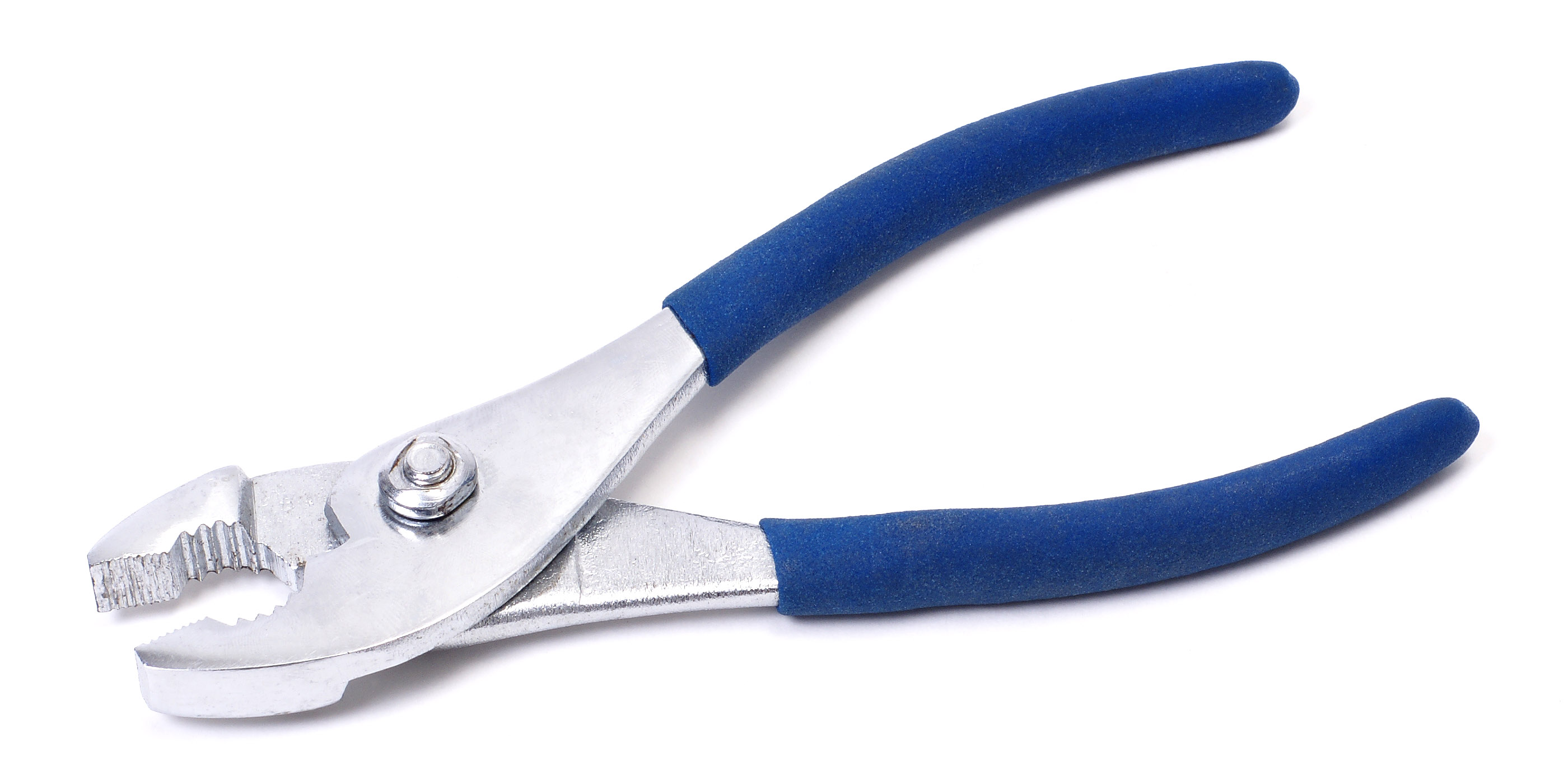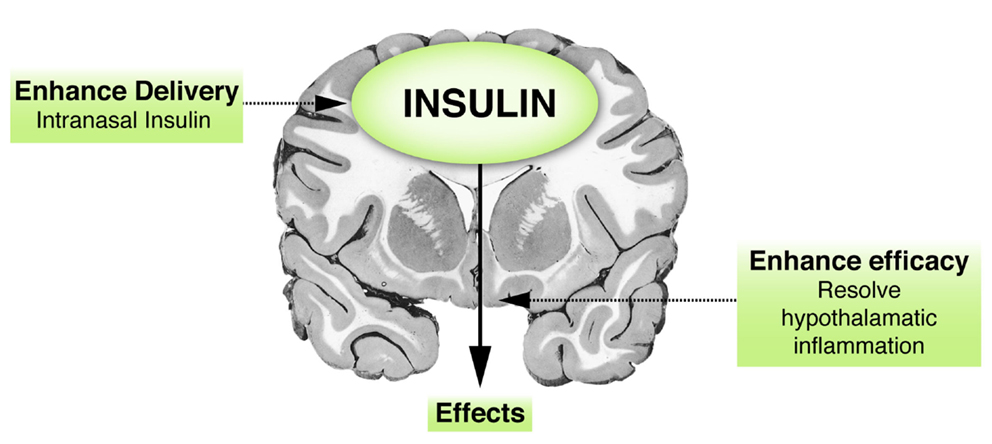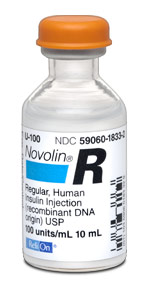INTRANASAL INSULIN aka NASAL INSULIN aka INI
“I have been using intranasal insulin (aka nasal insulin) for the past week or so, and am honestly shocked at its effectiveness. It seems to reduce the brain fog and neuroinflammation associated with my Sjogren’s syndrome.”
-Sean P. (quoted with permission)

Insulin sensitive brain areas.
Quick Summary
Intranasal insulin improves mood, enhances memory, increases brain energy levels (ATP and phosphocreatine), significantly reduces neuroinflammation, protects against neuronal oxidative stress by restoring antioxidants and energy metabolism, treats Alzheimer’s, and possibly cures type 1 diabetes.
Buy Novolin R legally over the counter in the U.S. without a prescription for $25 at Walmart.
Buy Humulin R in Europe here: Humulin R.
Buy Nasal Spray bottles here:
Nasal Spray Bottle
Nasal Spray Bottle (Swiveling Head)
Read on to learn more benefits and how to try it at home today!
The Benefits of Intranasal Insulin
Intranasal insulin is far and away one of the best brain enhancers I’ve ever tried (I’ve only tested 500+ though!).
Insulin nasal spray has been tested in over three dozen randomized, double-blind, placebo-controlled trials in humans and has been repeatedly shown to be extremely safe. R
This is due to the fact that the nasal route of administration effectively bypasses the blood brain barrier and targets neuropeptides (like insulin) to the brain without substantial absorption into circulation. R
This prevents nasal insulin from entering the bloodstream and makes it extremely safe (although there is always risk no matter what substance you are taking) since intranasal delivery directs the insulin into the brain, avoiding systemic side-effects. R
Here is the path it follows from the nasal cavity to trigeminal and olfactory nerves and into the brain.

I-insulin has been shown to significantly improve mood, self-confidence, and memory in young, healthy humans without affecting blood glucose or insulin levels. R
The reason it works so well for memory is that, “insulin receptors in the brain are found in high densities in the hippocampus, a region that is fundamentally involved in the acquisition, consolidation, and recollection of new information.” R
It dramatically increases brain energy levels (ATP and phosphocreatine). R
Insulin protects against neuronal oxidative stress by restoring antioxidants and energy metabolism. R
It’s scientifically validated to reduce caloric intake and accelerate fat loss in men with NO conscious effort. (See my post on The Intranasal Insulin Diet)
It increases cerebral blood flow. R
It enhances working memory and hippocampal recall in women. R

Post meal administration of intranasal insulin intensifies satiety and reduces intake of sweet snacks in women (ie. it helps you stay on your diet!). R
It improves whole body insulin sensitivity through the hypothalamus. R
Intranasal insulin enhances post meal thermogenesis (ie. helps you burn off the extra calories from that huge meal you just ate!). R
It has demonstrated benefits for prevention of cognitive decline in older people. R
There is evidence that it’s neuroprotective in ischemic stroke. R
After showing immense promise in earlier trials, it was one of only two substances selected by the US government to be tested as a cure for Alzheimer’s disease (in the SNIFF trial). R

It acutely facilitates verbal memory in patients with Alzheimer’s disease (AD). R
Intranasal insulin therapy can help to stabilize, slow, or possibly even reverse the course of Alzheimer’s Disease! R
It preserves brain metabolism in Alzheimer’s patients. R
Lastly, it’s being tested as a cure/vaccine for type 1 diabetes. R
This list is insane!
And best of all, intranasal insulin is completely legal to buy over the counter without a prescription (in the U.S. and Canada), and costs only $24.88 at Walmart.
So, if you’re healthy and want to improve your memory, if you want to melt away extra pounds away, or if you’re struggling with cognitive impairment or memory issues, intranasal insulin has enormous potential to improve your mental function.
Let’s hear from a scientist whose life is dedicated to studying intranasal insulin.
Well, at least watch the short video below. =)
How Do I Make Intranasal Insulin?
Good question!
You only need three things.
1. Novolin R (purchased OTC at Walmart)
2. Nasal Spray Bottle or Nasal Spray Bottle (Swiveling Head)
3. Pliers
Where to Buy Intranasal Insulin
Just go to any Walmart pharmacy and ask for Novolin R.
Yep, it’s just that simple.
They keep it tucked away behind the counter.
Here in the U.S. it costs $24.88 and there’s no need to show an ID, sign a list, or give an explanation.
It’s perfectly legal to buy.
I just walk up confidently, know exactly what I’m gonna say, and ask for Novolin R.
I’ve done this dozens of times and they’ve never questioned me once.
Insulin Nasal Spray
The next step is to get a nasal spray bottle and pour the insulin in.
I’ve used these two bottles and they both work great: 1) Nasal Spray Bottle, 2) Nasal Spray Bottle (Swiveling Head)

Use pliers to carefully remove the lid from the insulin container.

You may have to wiggle it a little to get it off but it’s not difficult after you’ve done it a time or two.
Be careful not to squeeze too hard and crush the insulin vial.
Pour Some Sugar on Me
Now we’re ready to pour the insulin into the nasal spray bottle.
There is no need to dilute the insulin or add anything else.
Just pour the insulin into the nasal spray bottle, screw the lid back on, and you’re good to go.
Even though the Amazon ad for these bottles shows there is a label on them, there isn’t (usually!).
It’s just a high quality glass spray bottle.
Make sure you store it in the fridge!
I like to keep mine in the crisper drawer but that’s just me. =)
Intranasal Insulin Dosing
Human studies with intranasal insulin have gone as high as 160IU per day:
1. 40IU, 4x per day for a total of 160IU/day. R
2. 160IU as a single dose. R
I don’t recommend going this high though.
Miniumum effective dosing is always a better idea.
Each spray is .1mL which comes out to 10IU per spray.
I recommend starting with one partial spray on day one (to test for allergies/adverse reactions).
On day two, try one full spray in the morning.
On day three, try one full spray in the morning after breakfast and one full spray in the evening after dinner (20IU total).

I think you get the idea. =)
Incrementally work your way up and find the minimal amount you can get away with.
I’ve settled on 10 IU after breakfast and 10 IU after dinner.
How High Can We Go?
As I mentioned before, the highest dose tested on humans has been 160IU per day. R
The longest period of time intranasal insulin has been tested in humans is 4 months. R
Both of these studies showed no serious side effects and I would consider these to be the upper limits until more long term data comes out.
The SNIFF trial for Alzheimer’s is currently testing the effects of long term (1 to 1.5 years) administration of intranasal insulin so we might be able to bump up the duration of our dosing once those results are released in 2017. R
Conclusion
Intranasal insulin is one of the most exciting substances I’ve come across in over 10 years of self-experiments.
It has the power to radically transform the lives of millions of people…sick and healthy alike.
I hope it works amazingly well for you!
If you try it, please leave a comment below to let me know how it’s going.
Until next time.
-LF Out.
Where To Buy
Buy Novolin R legally over the counter without a prescription at Walmart for $25.
Nasal Spray Bottle
Nasal Spray Bottle (Swiveling Head)
Appendix 1: Extended Discussion on the Safety of Intranasal Insulin
Is Intranasal Insulin Safe?
I think the best way to answer this question is to take a look at what the studies have to say about adverse events in the human trials.
Well, what say you scientists?
“No treatment-related severe adverse events occurred during the study, and most adverse events were minor, such as dizziness or mild rhinitis. There were no episodes of hypoglycemia.” R
“This effect was independent of odor type and in the absence of systemic side effects (eg, fasting plasma glucose levels remained unaltered).” R
“Intranasal insulin administration appears safe, does not affect systemic glucose control, and may provide acute improvements of cognitive function in patients with type 2 DM…” R
“Intranasal insulin was well tolerated; no subject exhibited hypoglycemia or other safety concerns.” R
“This pilot study demonstrates both efficacy and safety of using intranasal insulin to treat early Alzheimer’s and mild cognitive impairment.” R
“Short-term use of intranasal insulin without absorption enhancers was predominantly well tolerated, the risk of hypoglycaemia was minimal and no objective nasal adverse effects were detected.” R
“Plasma insulin and glucose levels were unaffected by treatment.” R
“Results indicate a direct action of prolonged intranasal administration of insulin on brain functions, improving memory and mood in the absence of systemic side effects.” R
Umm…I could go on but I think you get the idea. =)
As far as pharmaceuticals go, it seems pretty darn safe.
Even though dozens of studied have indicated that intranasal insulin is quite safe, a few people have asked me about zinc in Novolin R.
And rightfully so!
Let’s check it out…
Is Zinc in Intranasal Insulin Safe?
Novolin R contains the following ingredients: “Novolin R is a sterile, clear, aqueous, and colo
rless solution that contains human insulin (rDNA origin) 100 units/mL, glycerol 16 mg/mL, metacresol
3 mg/mL, zinc chloride approximately 7 mcg/mL and water for injection.” R
I’ve received a number of questions recently about the safety of zinc in intranasal insulin.
It’s a legitimate question!
The reason people ask is that there was an old version of Zicam (an intranasal cold and allergy product) that was withdrawn from the market a number of years ago due to suspicions that the zinc in the product caused anosmia or loss of smell. R

Novolin R also contains zinc so a few people have expressed concern about taking it intranasally.
Is it something we should be worried about?
From Hey to Zinc
The good news is that a recent study actually addressed this exact issue.
Here was their conclusion, “in this paper we provide animal and epidemiological evidence leading to the opinion that zinc in the intranasal insulin formulation delivered in Phases I–III is safe to human health.” R
The reason is simple: there is a TINY amount of zinc in intranasal insulin.
In fact, Novolin R has only 7 micrograms (mcg) of zinc per 100IU. R
A microgram is a millionth of a gram!

If you are taking 20IU of Novolin R you are only getting 1.4 mcg of zinc.
This is a minuscule amount and is no cause for concern.
As the authors of the study stated, “zinc concentrations of 0.0007% to 0.00654% in commercial insulin preparations place it away from the 0.01% neurotoxicity cutoff observed in animal studies.”
So, there you have it.
Sounds like we’re pretty good with zinc.
What about meta-cresol?
Is Meta-Cresol in Intranasal Insulin Safe?
Meta-cresol is a preservative in just about every commercially available insulin formulation and is used to prevent bacterial growth and infection.
Novolin R contains 3mg of metacresol per 100IU of insulin.
So, if we are taking 20IU of intranasal insulin we are getting .6mg of metacresol.
The question of safety is somewhat difficult to answer definitively since there are no human studies directly addressing intranasal meta-cresol.
So, I messaged Dr. Suzanne Craft to get her thoughts on meta-cresol in intransal insulin.
Dr. Craft is Professor of Gerontology and Geriatric Medicine at Wake Forest and is one of the leading researchers on intranasal insulin as a treatment for Alzheimer’s.
She’s actually spearheading the SNIFF trial.
Here’s her faculty page.
This was her response when I asked her about the risk of meta-cresol in i-insulin (quoted with permission).
“You are correct that meta-cresol is frequently used as a preservative for insulin and that animal studies have raised questions about its safety in large doses or after prolonged exposure. As with most preservatives, there is a balance that has to be achieved between the possible negative effects of the preservative and the possible negative effects of contaminated or “spoiled” insulin, particularly when one is targeting the brain, which is susceptible to bacterial infections. Several companies are working on developing meta-cresol-free insulin formulations and hopefully they will be available soon to test for the purpose of treating neurodegenerative disease, but currently they are not widely available and they are expensive relative to regular insulin. Regarding the specific risk for Alzheimer’s patients, as it is a fatal disease with no current effective treatments, I believe most scientists would agree that the potential benefit of the insulin outweighs the risks of the meta-cresol since those risks have not been definitively documented in humans at the doses used in current insulin formulations.”
Wow, that’s a terrific answer and very cool of her to respond to my email.
Her main point is that the benefits of preventing brain bacterial infection outweigh the concerns caused by meta-cresol.
Of course, there is always risk but we seem to be on pretty safe ground with intranasal insulin.
Appendix 2: Intranasal Insulin As A Revolutionary New Treatment For Alzheimer’s
Intranasal insulin halts the progression of Alzhiemer’s disease and enhances cognition in humans.
Take 10IU after breakfast and 10IU after dinner.
Intranasal insulin improved memory, caregiver-rated functional ability, and general cognition in Alzheimer’s Disease patients (see full study abstracts below for more info).
“Treatment with 20 IU of insulin improved delayed memory (P < .05), and both doses of insulin (20 and 40 IU) preserved caregiver-rated functional ability (P < .01).”
“Both insulin doses also preserved general cognition as assessed by the ADAS-cog score for younger participants and functional abilities as assessed by the ADCS-ADL scale for adults with AD (P < .05).”
How Does It Work?
Intranasal insulin bypasses the blood brain barrier and absorbs into the brain where it activates insulin receptors which are highly concentrated in the hippocampus, hypothalamus, and cortex.
This picture explains it nicely!

What Type of Insulin?
“…insulin (Novolin R; Novo Nordisk, Princeton, New Jersey) was administered…”
Here’s what Novolin R looks like.

How Much Insulin?
“…36 participants received 10 IU of insulin twice a day…”
“…38 participants received 20 IU of insulin twice a day…”
Therefore, either take 10IU after breakfast and 10IU after dinner OR 20IU after breakfast and 20IU after dinner.
I would start with the lower dose (10IU).
I’ve done really well with 10IU twice a day in my own self-experiments for cognitive enhancement (although I don’t have Alzheimer’s).
How Was Insulin Administered?
“Saline or insulin (Novolin R; Novo Nordisk, Princeton, New Jersey) was administered after breakfast and dinner with a ViaNase nasal drug delivery device…”
Here’s the ViaNase.

While something like the ViaNase might be nice other human studies on intranasal insulin have used spray bottles or droppers with very good results.
I use this and it works great. Nasal Spray Bottles

Each spray should be about 10IU.
How Long Did They Take It?
“Participants received placebo (n = 30), 20 IU of insulin (n = 36), or 40 IU of insulin (n = 38) for 4 months…”
The subjects dosed for four months and the best part was, “No treatment-related severe adverse events occurred.”
Four months is the longest that I’ve seen intranasal insulin dosed in humans and I would currently consider it an upper limit until the results of the multi-year SNIFF trial are published (see link below to SNIFF study on intranasal insulin for Alzheimer’s).
Appendix 3: Intranasal Insulin as a Vaccine to Cure Type 1 Diabetes
I previously mentioned that intranasal insulin is currently being tested as a vaccine to cure type 1 diabetes.
The clinical trial I was referencing is called the INIT II trial. https://clinicaltrials.gov/ct2/show/NCT00336674
Type 1 diabetes accounts for about 5% of all diabetes cases (typically in children and young adults) and occurs when the body’s own immune cells destroy insulin producing beta cells in the pancreas. R

The INIT II study is doing this: “In people with type I diabetes the beta cells of the pancreas no longer make insulin because the body’s immune system has attacked and destroyed the beta cells. It is thought that exposure of the mucous membranes to insulin may cause act like a vaccine effect whereby protective immune cells are stimulated and these then counteract the “bad” immune cells that damage the beta cells. This study aims to determine if intranasal insulin can protect beta cells and stop progression to diabetes in individuals who are at risk.” R
They will administer i-insulin daily for 7 consecutive days then on one day each week for 12 months and follow the patients until 2024 to measure the effects.
Here’s a fascinating discussion about it on wikipedia. It’s really cool!


92 Comments
Leave your reply.